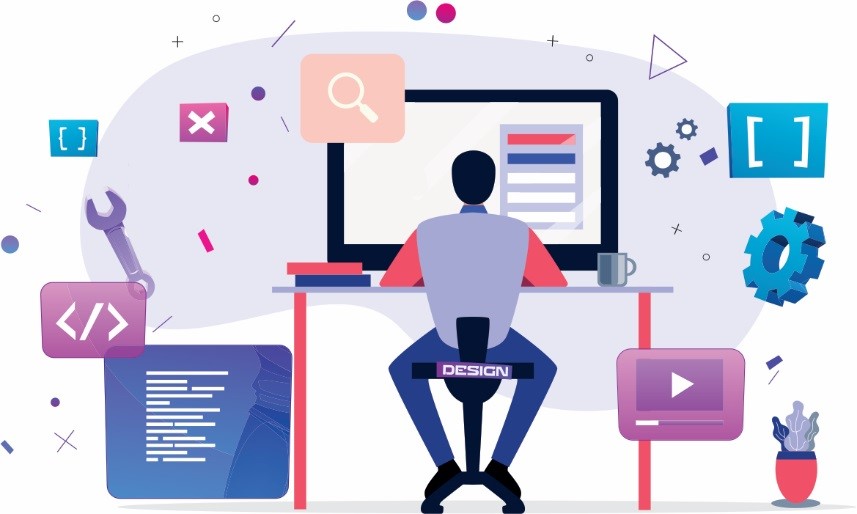Why Picking the Right Software Development Partner Can Transform Your Project
Dedicated Developers vs. In-House Teams: Which Is Right for You?
The decision in between using committed designers and preserving an internal team is a significant one that can affect the trajectory of your tasks and overall company method. On the other hand, internal teams contribute to a cohesive business culture and a nuanced understanding of long-lasting objectives.
Comprehending Devoted Programmers
The growing demand for specialized skills in the tech sector has caused the emergence of devoted programmers as a practical solution for numerous companies. These experts are normally gotten on a task basis, permitting companies to take advantage of particular know-how without the long-lasting commitment related to permanent hires. Devoted developers are commonly embedded within a client's group, offering adaptability and scalability to fulfill task demands.
This version enables companies to access a global ability pool, which is specifically advantageous in a quickly progressing technological landscape. Devoted developers can be sourced from different geographical locations, ensuring that companies can locate the best ability set at competitive prices. They commonly bring a wealth of experience and knowledge, having worked on diverse jobs throughout various industries.
Additionally, specialized designers can concentrate exclusively on the jobs available, enhancing performance and performance. They are equipped to integrate perfectly right into existing operations, collaborating carefully with in-house teams to accomplish project objectives. This method not just decreases the concern of employment and training however likewise enables organizations to continue to be dexterous, adjusting promptly to changing market demands and technical advancements.
Benefits of In-House Teams

Additionally, in-house teams tend to have a deeper understanding of the company's goal, values, and goals. This alignment can enhance staff member engagement and motivation, as staff member feel a lot more connected to their job and the organization's success. In addition, having a specialized in-house group allows for much better positioning of goals and methods, as these participants are constantly focused on the company's priorities.
In-house groups additionally promote quicker decision-making processes, as they can respond a lot more swiftly to difficulties and changes. The well-known partnerships and knowledge with firm methods permit streamlined workflows and reduced miscommunication. Ultimately, the combination of a natural society, placement with business objectives, and effective communication makes internal groups a useful property for many organizations, specifically those aiming to grow long-lasting growth and development.
Price Factors To Consider
When assessing cost factors to consider, both specialized developers and internal teams present distinct financial ramifications for organizations. Involving specialized developers normally entails a pay-per-project or per hour rate model, which can be cost-effective for businesses with rising and fall task demands. This method enables adaptability in scaling sources up or down, ensuring that business just spend for the services they require.
In comparison, in-house groups entail fixed costs, including wages, advantages, and overhead costs such as office space and tools. While this version supplies better control and immediate availability of resources, it might bring about higher lasting expenses, specifically if the workload does not warrant a full time team.
In addition, firms should consider the surprise expenses related to recruitment and training of in-house staff members, which can even more stress spending plans. In many cases, the time and resources invested on managing an in-house team can diminish the company's core business objectives.

Project Monitoring and Versatility
Job monitoring and flexibility are crucial aspects that affect the choice in between dedicated designers and internal teams. Committed programmers commonly provide a high level of flexibility, allowing organizations to range sources up or down based on job demands. This agility can be particularly helpful for businesses experiencing varying work or those seeking to innovate quickly. Devoted teams usually have developed processes for managing jobs efficiently, leveraging certain methods like Agile or Scrum, site link which help with repetitive progress and flexibility.

Eventually, the option in between specialized programmers and in-house groups depends upon the preferred level of adaptability and the particular task administration requirements. Firms should assess their operational dynamics, project intricacy, and resource schedule to figure out which option straightens finest with their tactical goals.
Making the Right Selection
Picking the best growth strategy-- dedicated programmers or internal groups-- calls for a mindful analysis of various elements that align with a firm's strategic objectives. On the other hand, in-house groups can offer far better continuity and assimilation with existing employees.
Following, examine your budget. Devoted programmers frequently offer a cost-effective option for short-term jobs, while internal teams may sustain higher long-term expenditures because of salaries, benefits, and expenses costs. Examine the article degree of control and partnership desired; internal teams normally promote stronger interaction and positioning with business society.
In addition, think about the time frame. If immediate outcomes are necessary, devoted designers can be onboarded swiftly, whereas constructing an in-house team requires time for employment and training. Evaluate the long-lasting vision of your organization. If continuous development is vital, purchasing an internal group may yield better returns over time. Ultimately, the choice rests on a thorough analysis of these variables, making sure placement with your business's overall purposes and functional requirements.
Final Thought
In conclusion, the decision between internal groups and devoted designers pivots on task requirements and business purposes. Devoted developers offer versatility and customized proficiency, making them ideal for temporary campaigns. Conversely, in-house groups grow a cohesive culture and much deeper positioning with long-lasting objectives. Careful evaluation of spending plan constraints, job timelines, and wanted control levels is necessary for figuring out the most appropriate technique, guaranteeing positioning with critical priorities and about his operational effectiveness.
The decision between utilizing devoted designers and keeping an in-house group is a substantial one that can influence the trajectory of your tasks and general organization technique.Project administration and flexibility are critical factors that affect the choice in between in-house teams and dedicated programmers. software development partner.In comparison, in-house groups may excel in preserving a consistent task administration framework due to their experience with the organization's culture and long-term objectives. Dedicated designers frequently provide an economical solution for short-term tasks, while in-house teams might sustain higher long-term expenses due to incomes, benefits, and overhead expenses.In final thought, the decision in between committed programmers and internal groups hinges on task requirements and organizational purposes